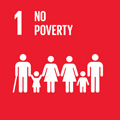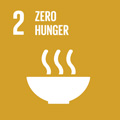- Docente: Lucia Corrain
- Credits: 6
- SSD: L-ART/04
- Language: Italian
- Teaching Mode: In-person learning (entirely or partially)
- Campus: Ravenna
- Corso: Second cycle degree programme (LM) in History, preservation and enhancement of artistic and archaeological heritage and landscape (cod. 6703)
-
from Mar 24, 2026 to Apr 23, 2026
Learning outcomes
The course covers the history of art histories, i.e. it enables students to deepen their knowledge of what was discussed and disseminated through written form in the cultural and social milieu to which the artist belonged, in the different eras, bearing in mind that each example of artistic literature is the result of a complex process of reflection and is filtered through the dominant currents of thought. By the end of the course the student will achieve a good level of knowledge of the fundamental texts produced by artists, men of letters, scholars and philosophers; they acquire the key tools for the framing of artistic production over time and in different places.
Course contents
In today's age, the image is at the centre of attention: our lives are surrounded by a myriad of images that lead the eye to a kind of addiction. Careful observation is certainly a good viaticum for a better understanding of the paintings and other images that art history has delivered and continues to deliver to us; understanding will be even more effective if corroborated by appropriate readings.
Ekphrasis is a term of Greek derivation that indicates the description of a work of art, a descriptive discourse that effectively places the object before one’s 'eyes'. The starting point for this will be the ekphrasis of Philostratus Major (a 2nd century Greek writer), leading to the writings of authors closer to the present day, in order to compare different ways of describing the image.
Readings/Bibliography
All students are required to study the following texts:
Filostrato Maggiore, Immagini, introduzione, traduzione e commento a cura di Letizia Abbondanza, Aragno 2008 (o altre edizioni).
Pontillo, C, Musei di carta. Esposizioni e collezioni d'arte nella letteratura contemporanea, Carocci, Roma 2023.
Delorenzo, C., (a cura di), Racconti di pittura, Einaudi, Torino 2022.
Perec, G., Specie di spazi, Bollati Boringhieri, Torino 1989 (o altre edizioni).
Perec, G., Storia di un quadro, Skira, Milano, 2011 (o altre edizioni).
Corrain L., “Paesaggi di parole: l’esperienza visiva di Calvino”, E/C, 2008, pp. 1-20 (scaricabile http://www.ec-aiss.it/archivio/tematico/visualita/visualita.php).
For attending students, there is a workshop part involving the active participation of the students who will have to present a literary text (other than the ones they have to study) in the classroom in which an artistic 'object' is described.
Non-attending students should also prepare:
Calvino, I., 1995, Saggi 1945-1985, Mario Barenghi, a cura, Milano, Mondadori, tomo I e II (scritta sull'arte).
Teaching methods
The lectures will be supplemented by seminar sessions for attending students, involving active participation. Students will be required to present a letter in class about an artistic object that interested them.
Students with disabilities or specific learning disorders (DSA) who require compensatory tools may inform the lecturer so they can be referred to the relevant contact person to agree on the most appropriate measures.
PowerPoint presentations from the lectures will only be provided to those who attend.
Assessment methods
The oral test, which is open to both non-attending and attending students, consists of an interview designed to evaluate the critical thinking skills acquired by the student, who must demonstrate an appropriate knowledge of the books listed in the syllabus.
1. Students will be assessed on their ability to analyse texts in depth and place them within a broader context. The expressive mastery employed during the interview will also be a key factor.
2. Fair marks will be awarded for mostly mnemonic knowledge, an inability to analyse in depth, and a language that is correct but not always appropriate for the texts to be studied.
3. Superficial comprehension, poor analytical ability, and inadequate expression will lead to little more than adequate marks.
4. Deficiencies in form, inappropriate language and a lack of orientation within the bibliographical material to be studied in the programme will lead to negative assessments.
Teaching tools
Handouts and further reading will be available on the UNIBO platform https://virtuale.unibo.it.
Office hours
See the website of Lucia Corrain
SDGs




This teaching activity contributes to the achievement of the Sustainable Development Goals of the UN 2030 Agenda.
